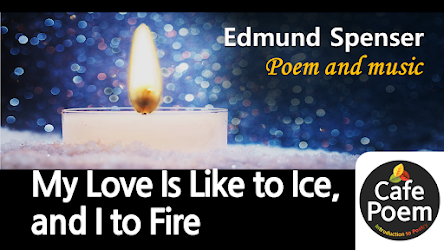Love's Language
How does Love speak?
In the faint flush upon the telltale cheek,
And in the pallor that succeeds it; by
The quivering lid of an averted eye--
The smile that proves the parent to a sigh
Thus doth Love speak.
How does Love speak?
By the uneven heart-throbs, and the freak
Of bounding pulses that stand still and ache,
While new emotions, like strange barges, make
Along vein-channels their disturbing course;
Still as the dawn, and with the dawn's swift force--
Thus doth Love speak.
How does Love speak?
In the avoidance of that which we seek--
The sudden silence and reserve when near--
The eye that glistens with an unshed tear--
The joy that seems the counterpart of fear,
As the alarmed heart leaps in the breast,
And knows, and names, and greets its godlike guest--
Thus doth Love speak.
How does Love speak?
In the proud spirit suddenly grown meek--
The haughty heart grown humble; in the tender
And unnamed light that floods the world with splendor;
In the resemblance which the fond eyes trace
In all fair things to one beloved face;
In the shy touch of hands that thrill and tremble;
In looks and lips that can no more dissemble--
Thus doth Love speak.
How does Love speak?
In the wild words that uttered seem so weak
They shrink ashamed in silence; in the fire
Glance strikes with glance, swift flashing high and higher,
Like lightnings that precede the mighty storm;
In the deep, soulful stillness; in the warm,
Impassioned tide that sweeps through throbbing veins,
Between the shores of keen delights and pains;
In the embrace where madness melts in bliss,
And in the convulsive rapture of a kiss--
Thus doth Love speak.
Enjoy the poem with beautiful music.
poem video👇
Who wrote the poem "Love's Language"?
Ella Wheeler Wilcox (November 5, 1850 – October 30, 1919)
Ella Wheeler Wilcox was an American author and poet who wrote “Solitude,” which contains the famous lines “Laugh, and the world laughs with you; weep, and you weep alone.” Popular among people rather than among literary critics, she often displayed in her poems cheerful and optimistic sentiments in plain and rhyming words. After she married Robert Wilcox in 1884, the couple became interested in spiritualism and promised each other that whoever died first would return and communicate with the other. After her husband died in 1916 after over 30 years of marriage, she was overwhelmed by grief and waited long to hear from her deceased husband in vain. She also believed in reincarnation. She died of cancer in 1919.
"Love's Language" explanation
In the poem, the speaker describes various
physical and emotional symptoms of falling in love, inviting us readers to
think about our own memories of love.








